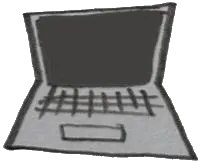There is a new action in Shortcuts that uses an on-device AI model that I am curious about this morning. There are many tasks in my reminders app. Some are interesting that I love to think on and daydream about. Come up with next actions and move towards a goal.
But then there are those other tasks that make you sigh and want to skip. Those ones need a little robot love for coming up with some quick, obvious next steps.
I set up a shortcut to run for those using the new "Use Model" action set to on-device, a couple of Ask for Input actions, and a New Reminder action.
The first Ask for Input prompt asks me what the task is. The second prompt asks me what success looks like. Then the Use Modal action has its request set to take the task and give me the next actions to get to success in four steps or less. I also added to the request to only include the steps. If you don’t, it includes messages like "Certainly! Here are the steps..." which I don't need for the task.
The new reminder uses the task as the title and puts the outcome and next actions in the notes. I ran it on a simple task like "Take out the trash" with success looking like "The trash bin will be empty". I got this reminder...
Take out the trash
## Outcome: The trash bin will be empty.
## Next Actions
- Empty the trash bin into a waste bag.
- Seal the waste bag securely.
- Place the waste bag in the recycling or waste collection bin.
- Ensure the trash bin is closed and locked.
A simple example for sure, but this rules. It is nice to have some next actions for the monotonous daily life tasks and ideas.
Are they always going to be the right next steps? Nope.
Will an incorrect list of next actions ping my brain to come up with the correct ones? Yep.
Would I run this on a long list of tasks and fill up the Reminders app with tasks? No way. One by one. Review them and tidy them. Don't give yourself a future task of tidying an overgrown inbox full of tasks with incorrect next actions.


